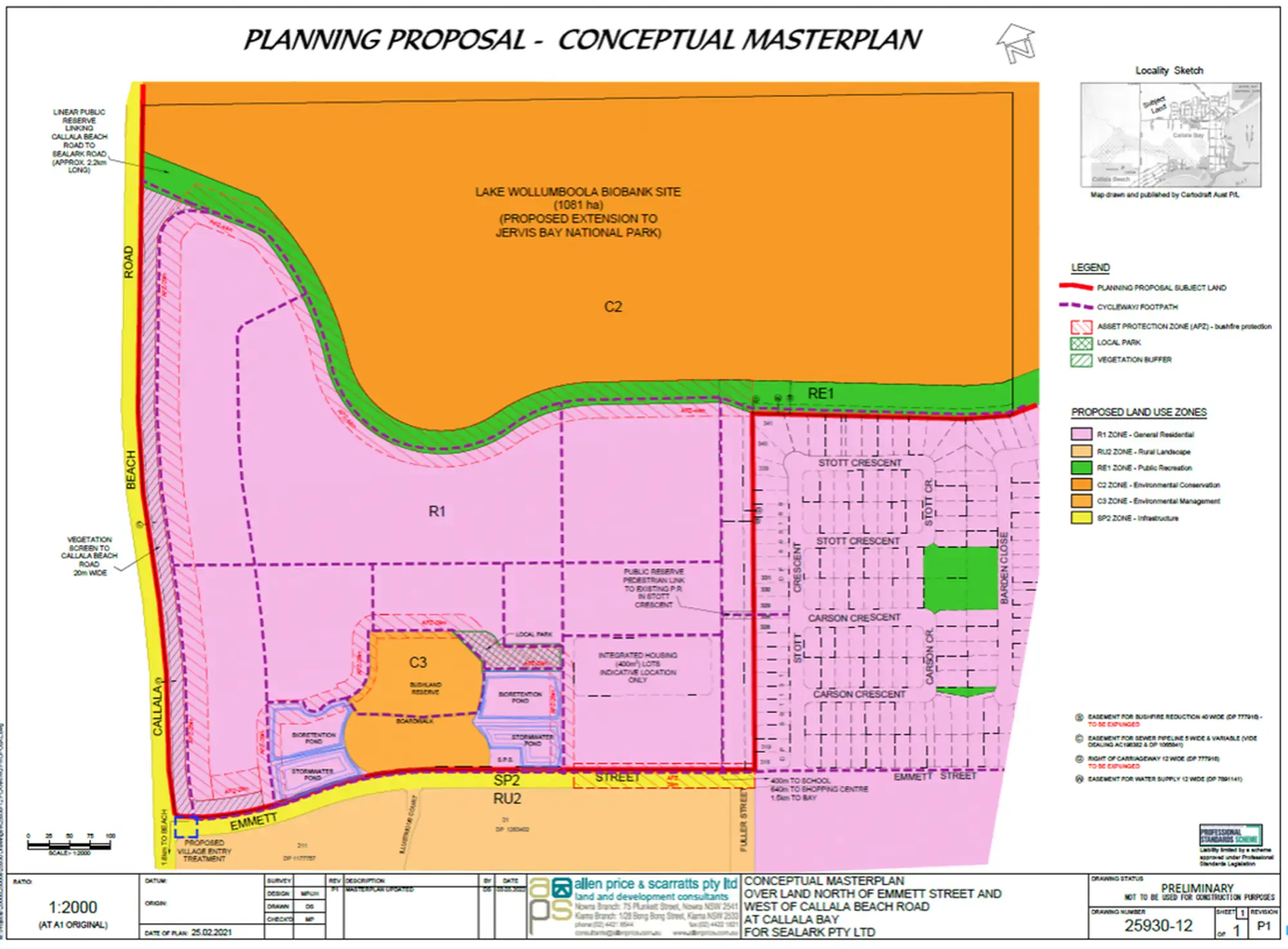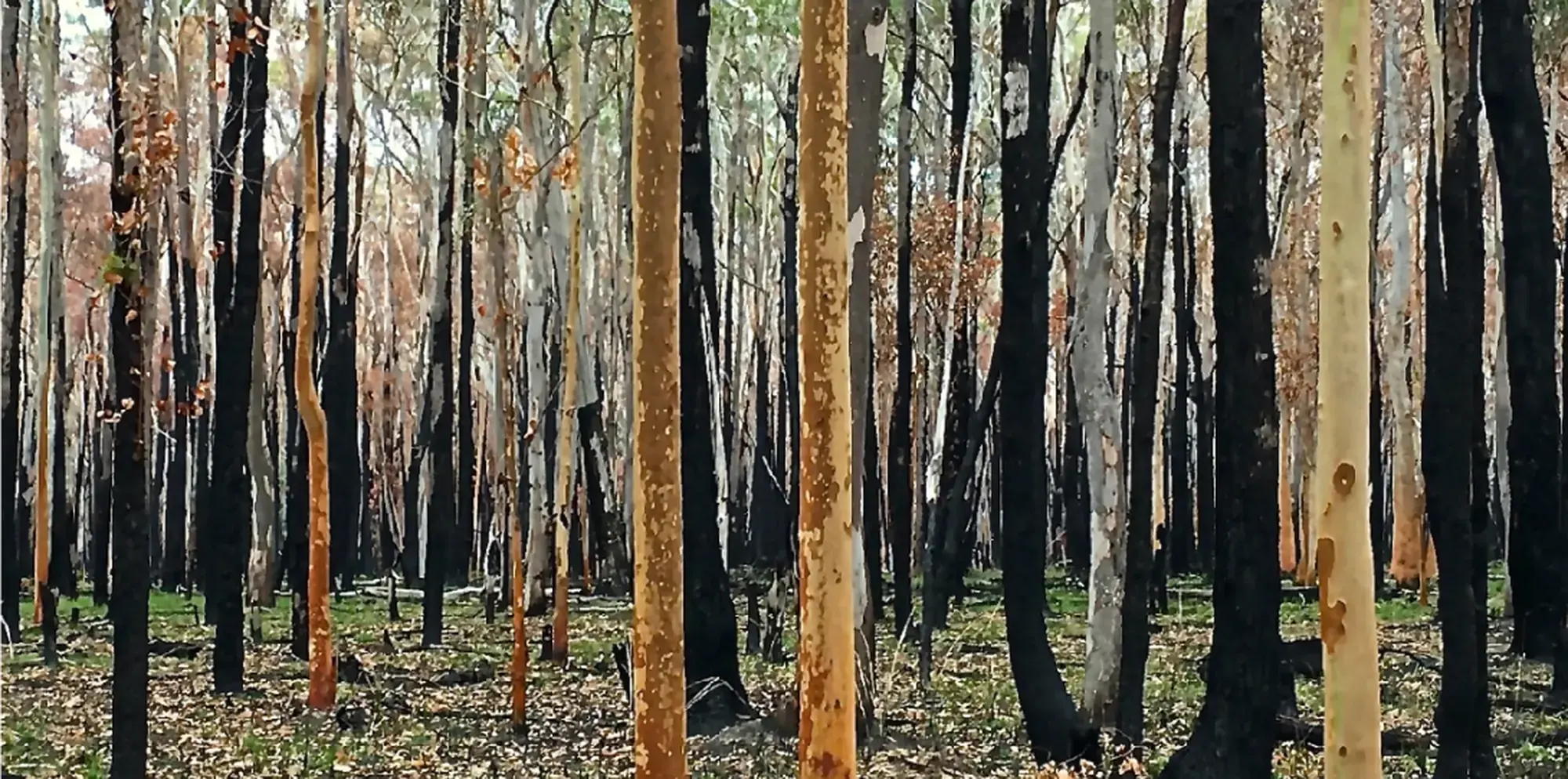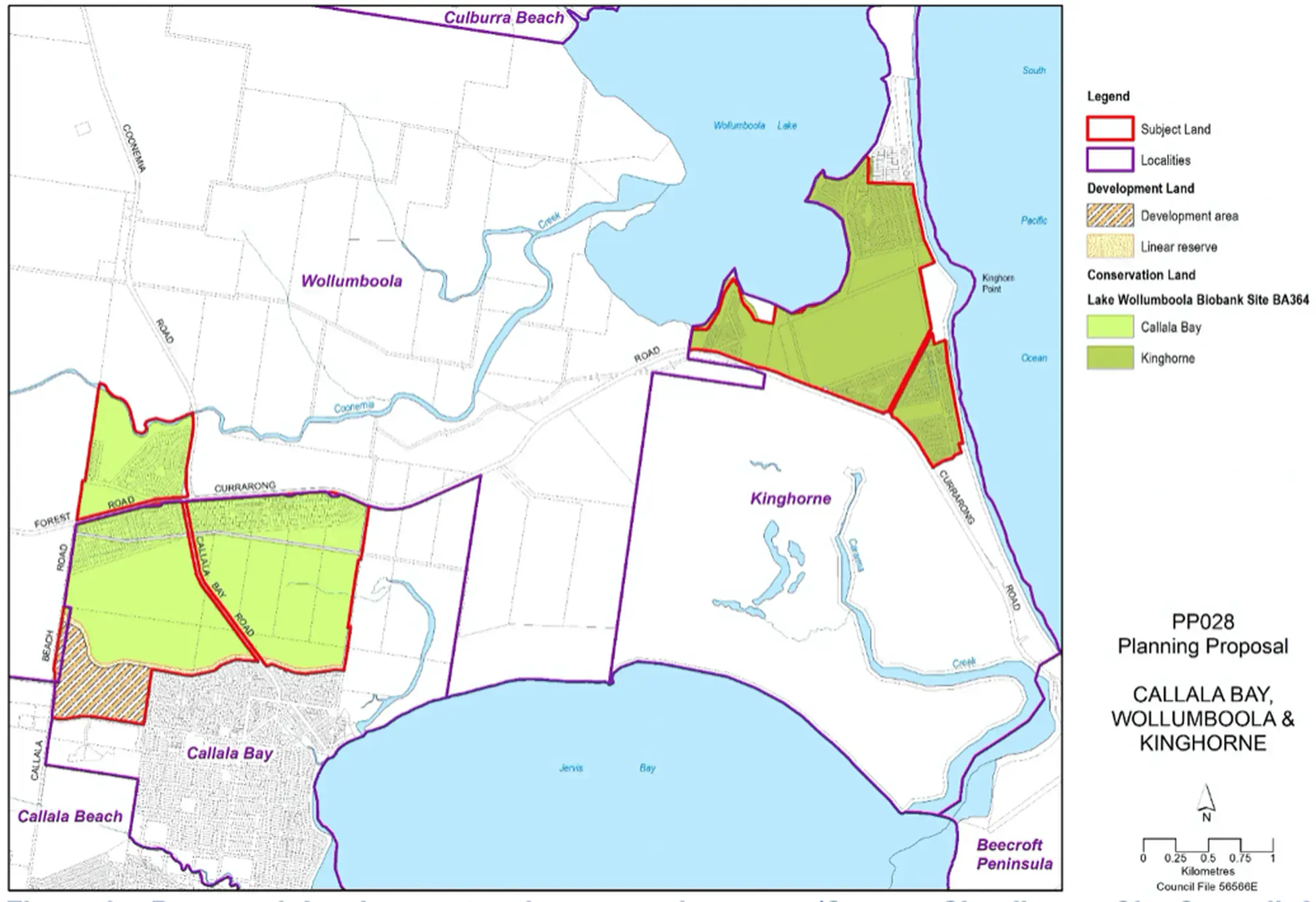Posted on 01 Jun, 2022

Figure 1: Native Forest, Callala Beach Road
The emerging political time-bomb of housing supply and affordability has interestingly coincided with the recent Covid exodus from big cities. This has some significant implications for rural and coastal communities such as our own.
Many people in search of better work/life situations have created an impetus for new development pressures on rural and regional areas across south-eastern Australia. The NSW south coast is by no means immune to this, and the advancing sprawl of low density residential sub-divisions dotted around the Shoalhaven has and continues to be fuelled by a combination of the above, and what seems like an ever-quicker and easier sprint down the freeway from metropolitan Sydney.
Our little neck of the woods, ie the northern half of Jervis Bay, has therefore again come under the gaze of the housing development industry. The Henry Halloran Trust is an organisation administered through a perpetual grant to Sydney University. It is the legacy of Henry Halloran, a larger-than-life, landowner-developer who acquired huge tracts of land in Sydney and along the length of the south coast over the first half of the twentieth century. Halloran had a great interest in town planning and was the driving force behind a wide range of executed commercial and philanthropic/visionary projects.
It is also an organisation with two distinct sides to its charter. To quote from the Sydney University website: “The Henry Halloran Trust is a cross-disciplinary research centre that brings together scholars, industry and government to provide leading-edge, sustainable research. Our grants, research programs and public events are designed to foster innovation in town planning, urban and regional development, and land management.”
On the other side, the Trust and Henry Hallorans heirs also continue to be owners of “significant portions of undeveloped marginal lands…much of which is zoned non-urban and can never be built upon” (Wikipedias words, not mine).
The Trust is an object case of the inherent anomalies that can arise when philanthropic and private interests intersect, which brings this discussion to the matter at hand.
The Halloran Trust and landowners have long-held ambitions for two major tracts of land in our area (Kinghorne/Wollumboola and Callala Bay, refer Fig 2 below). The recent surge in demand for regional housing has re-invigorated its appetite for a re-zoning of these presently rural and coastal “non-urban lands”, which are situated within the delicate bushland and aquatic landscapes surrounding the necklace of small hamlets where we live, work and play.
It is fair to say that the community and council have over many years tempered these development aspirations, and a significant portion of the Trust land holdings is now proposed to be dedicated to the Jervis Bay National Park as part of the current PP2021-406 planning proposal. It should be noted however that this is neither new or particularly generous, as the bulk of the land has always been “marginal” and hence unsuitable for urban development.
Councils web page (link below) describes the application thus:
The majority of the subject land (517 ha) is proposed to be rezoned for environmental conservation and addition to Jervis Bay National Park. Approximately 40 ha of land west of Callala Bay township is proposed to be rezoned for housing, environmental management and related infrastructure. This PP does not relate to Halloran Trust Lands in Culburra Beach. The Halloran Trust Land proposals were split in late 2017 and the Culburra Beach component now forms part of a separate proposal.
https://getinvolved.shoalhaven.nsw.gov.au/halloran-trust-callala-kinghorne-pt
The current application reflects this description: it is for a re-zoning of 40Ha of non-urban mature coastal forest to the immediate west of the existing Callala Bay township, with the balance of the subject 517 Ha land at Callala Bay and Kinghorne proposed to be re-zoned as non-urban “Biobank Site”. The application excludes any details or an indicative individual lot sub-division plan, however it would be prudent to assume this will immediately follow the re-zoning approval.
It is possibly too late to challenge the underlying environmental rationale of this proposal, notwithstanding valid questions in relation to:
-
dilution of the urban character that distinguishes the region, where small, well-defined hamlets set in strong green landscapes will lose their distinctive identity through encroachment of a new tract housing estate sprawling into the existing mature coastal forest that presently surrounds the village.
-
destruction of tree canopy and loss of carbon sequester capacity
-
destruction of unique native flora and fauna habitat
-
loss of distinctive, mature landscape character along travel corridors (Callala Beach Rd, Emmett St)
-
Rainwater and hydrology management
-
Utility infrastructure capacity (sewerage, water, power, telecoms)
-
Road capacity
-
Bushfire management including limited access/egress to the area
-
Extinguishment of future rezoning and development rights along Forest Rd, Coonemia Rd and Currarong Rd (as indicated in the PP2021-406), as well as for the entirety of the Kinghorne Site to a Biobank zoning (as indicated in the PP2021-406). (Why do these old paper sub-divisions persist on the new plans?)
-
Any requirement for biodiversity certification of subsequent development being relieved by the proposed over-arching Biobank re-zoning and accreditation.
The Callala Foreshore Alliance is concerned that the proposal as submitted fails to provide adequate clarity or assurances in relation to these matters, and that the time to embed the community’s expectations must be prior to this re-zoning application being approved.
The Jervis Bay Settlement Strategy 2003 (joint Shoalhaven Council/Dept of Planning) states:
“The Jervis Bay region is an icon of the NSW South Coast. Like many coastal regions in NSW Jervis Bay is facing settlement pressures. At the forefront of many peoples concerns are the changing character of towns and villages, hazards such as bushfires and flooding, and protection of water quality and unique biodiversity. Solutions to these issues must be found in collaboration with the communities of Jervis Bay.”
The Plans objective in relation to Landscape is to “ensure that the significant landscape character of the region is recognised and conserved, and that new settlement does not have a detrimental impact on natural areas or processes.”
This is to be achieved by the following actions:
- New settlement will comply with REP 1996 cl.12 – Landscape quality and values should not be compromised by new development in the region.
- New sub-division and housing will be designed in sympathy with the landscape features of the locality and in order to achieve this outcome, design guidelines will be prepared as part of new development proposals in the region.
- Important visual aspects of the landscape will be identified and conserved, including the aesthetic quality of coastal landscapes.
The Halloran Trust prides itself on its philanthropy and innovation in town planning, however the community has a right to seek assurances of what will be delivered prior to any re-zoning consent, rather than accepting “just trust me, it will be worked out later”, which also seems to be Councils position (see Conceptual Master Plan, refer Fig 3 below). Who can confidently say on the basis of information provided that a new urban place will be created that meets community expectations? Will the site be chopped up into small parcels and sold to a range of local builders and developers? That isn’t good enough, Council and DPIE need to obtain guarantees about the vision, detail and delivery processes before support and consent is given to this proposal.

Regrettably there is also little evidence that the public can rely on government to protect community interests by ensuring such promises are carried out. Premier Perrotet and Planning Minister Roberts have of late been far more interested in dismantling existing and new environmental planning legislation that protects and enhances the quality of our built and natural environments. This is being done on the premise of removing impediments to quicker developer approval pathways, with the ambition being to wallpaper over emerging housing supply and affordability policy problems of their own making.
Talk about letting the foxes loose in the henhouse! It may be a short-term fix to a political problem, but what about the long-term legacy for our environment?
As a starting point, the CFA suggests that a master plan for the 40 Ha site should be developed by the applicant now to demonstrate how all of the above can be addressed, as well as articulation of:
-
A clear vision for a sustainable low density residential community with good safety and communal infrastructure (open spaces and communal buildings).
-
A detailed structure plan and master plan.
-
Provision of a more diverse range of alternative housing delivery models and typologies, to address broader demographics and affordability considerations.
-
A significant tree master plan that protects key canopy and habitat, and informs infrastructure and block layout (Benton Sands Master Plan is a good starting point)
-
Protection of scenic landscape amenity along road corridors with deeper buffer zones and existing landscape retention.
-
Innovative water retention and re-use planning – Water Sensitive Urban Design.
-
Protection of flora and fauna bio-diversity, including safe fauna sub-grade crossings to adjacent bushland.
-
Building design guidelines (Benton sands Master Plan is a good starting point)
-
High-bar building and infrastructure sustainability requirements.
-
Provision of sustainable transport pathways and connectivity to Callala Beach and Myola.
-
A divestment and staging plan that ensures design principles will be consistently delivered over the entire course of the development process.
-
A perpetual community resources management plan for the public domain and communal facilities.
The CFA hopes that its members and other interested parties will support a higher level of detail being required before any approval is granted, by conveying their concerns to Council in relation to this application prior to the conclusion of the public exhibition period on 17 June 2022. Further details will be made available on this website.

